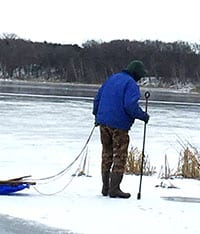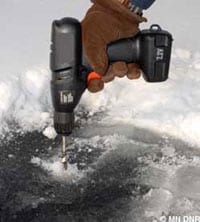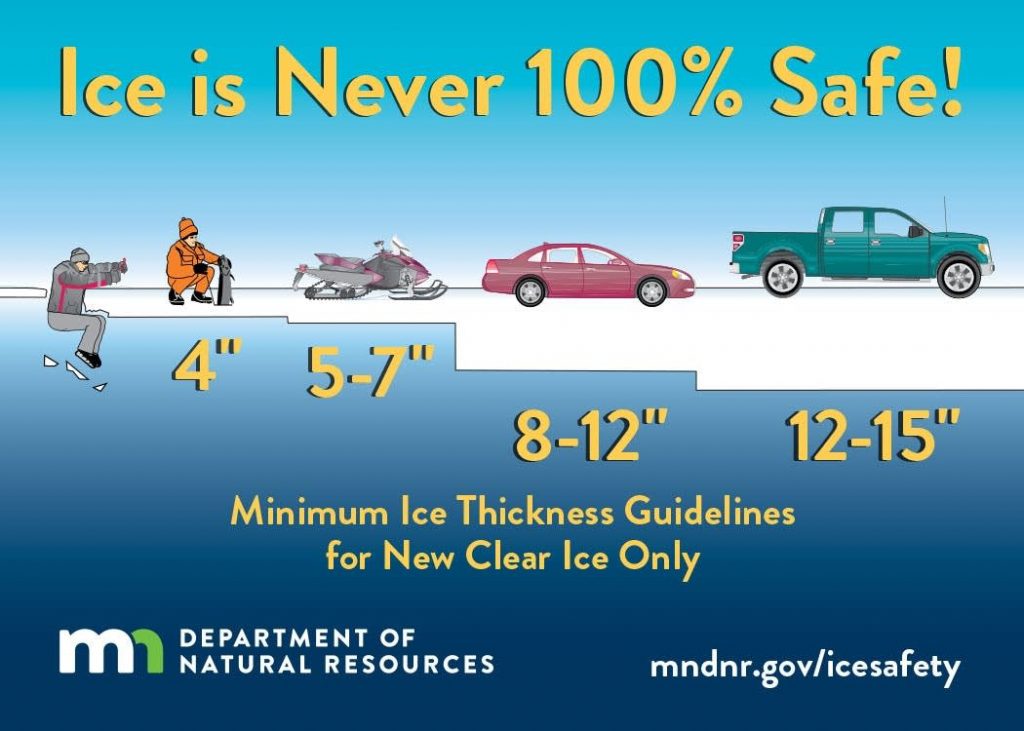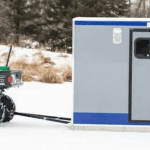Ice Fishing Safety – How to Check For Safe Ice Thickness!
Checking For Safe Ice Thickness - Ice Fishing 101
When it comes to getting out on the ice, Ambush always wants everyone’s main concern to be ice fishing safety! Playing it safe before you even think about stepping out onto the ice is the most crucial thing you can do. This is especially important at the start and the end of the winter season -regardless of where you are fishing. You should also make sure that everyone with you on the ice knows what to do in case you fall through the ice. Although the averages will vary in every state, fatalities related to ice fishing are common in several states. All ice is not created equal!
Ice Thickness Guidelines
The Minnesota Department of Natural Resources states these general guidelines on safe ice thickness for ice fishing:
- UNDER 4″ – STAY OFF
- 4″ – Ice fishing or other activities on foot
- 5″ – 7″ – Snowmobile or ATV
- 8″ – 12″ – Car or small pickup
- 12″ – 15″ – Medium truck
The guidelines above are for new, clear ice only. The numbers of safe ice thickness should be doubled when you are traveling on white ice. Ice is never 100% safe! The DNR does not measure the thickness of ice on Minnesota lakes. Safety is always the responsibility of the ice fisherman, and it is important to check for safe ice thickness every 150 feet.
White Ice
White ice, also commonly referred to as “snow ice”, when compared to new clear ice is only half as strong. Therefore, you should always double the safe ice thickness guidelines when you will be traveling along white ice. This is just one of many factors that can cause unsafe conditions to be on ice. A general rule to follow when you are planning your trip out on the ice is to avoid ice near inlets or moving water, and to watch out for cracks. If you are heading to an area that you are not familiar with, don’t be afraid to reach out to the locals! It is rare for ice to have the same thickness across a body of water, and locals will have the best knowledge when it comes to this. Lakeside businesses or bait shops may also be good resources when you have questions about the ice conditions. Never put yourself or others at risk and always gather information before heading out onto the ice!
Checking Ice Thickness
Before heading out on the ice, it is important to have information on everything that can affect ice fishing safety. These things can be, but are not limited to temperature, currents, snow cover, springs, and rough fish. Ice can be three feet thick in one place, and only one inch thick just a mere few yards away. It is very important that you check the ice at a minimum of every 150 feet.
Ice Auger
When it comes to checking the ice, you can use three different kinds of augers. The three options are electric, hand, and gas. A hand auger is a quiet, light weight, low-cost option to check for safe ice thickness. Although electric augers are quiet as well, they require less manual labor than a hand auger. Gas augers, although a faster option, are noisier, heavier, and generally higher in cost than electric or hand models. You can measure the thickness of the ice with a tape measurer after drilling your hole with an ice auger.
Ice Chisel
An ice chisel is a rod constructed of metal, with a sharp, flat blade that is attached to one end. After using a stabbing technique to create the hole and use a tape measurer to find the truce thickness of the ice. You can also use an ice skimmer with a handle that has inch marking instead of a tape measurer. Although this is a great way to test check for safe ice thickness, don’t judge by how easily the chisel breaks the surface! It happens so effortlessly that it’s easy to overestimate the actual thickness.
Cordless Drill
By choosing to use a cordless drill, you can make it through eight inches of ice in 30 seconds or less. Most cordless drills that are at a minimum of 7.2 volts are successful, but the bit type is important. A wood auger bit is necessary since they have a spiral referred to as a “flute” around the shaft. Metal drilling bits do not contain this! The flutes bring the chips of ice out of the hole, keeping it from getting stuck. This is like the workings of a full-size ice auger! After measuring for safe ice thickness with a measuring tape, giving the dry bit a spray of silicone lubricant will prevent ruse from occurring.


Ice Chisel - Checking For Safe Ice Thickness


Power Drill - Checking For Safe Ice Thickness


Ambush Ice Houses
Ambush offers two lightweight options of icehouse skids to take out onto the ice. The Slayer Ice Fishing House weighs only 880 pounds, while the Stryker Ice Fishing House weighs even less at 620 pounds. The all-aluminum frame of both houses is built without wood and seams, keeping everything lightweight so that you can get out onto the ice earlier or later in the season.
Check out the best ice fishing lakes here!
Still have questions about safe ice thickness? Want to know more about Ambush’s lightweight ice houses? Contact us here to get in touch today!




